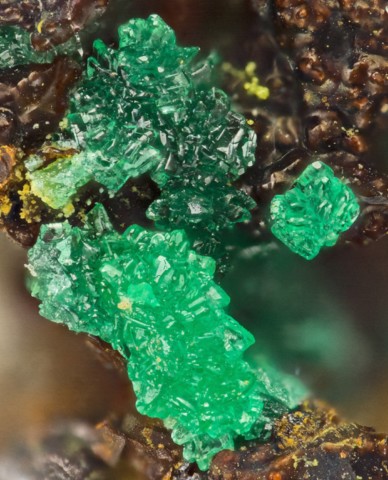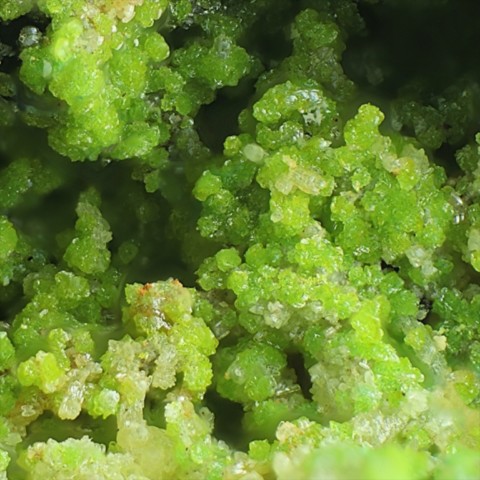TSUMEBITE
Class : Phosphates, arsenates, vanadates
Subclass : Anhydrous phosphates
Crystal system : Monoclinic
Chemistry : Pb2Cu(PO4)(SO4)(OH)
Rarity : Rare
Tsumebite is a complex sulfate of lead and copper admitting groups (PO4) in its structure. It is a secondary mineral of the oxidation zone of certain lead-zinc deposits rich in arsenic, where it accompanies other secondary minerals of these metals (malachite, smithsonite...). Its name comes from its discovery location : the Tsumeb mine (Namibia). Tsumebite is found in the form of emerald green incrustations composed of small interlaced lamellar crystals of 3 mm at most, constantly showing complex twins.
Main photo : Tsumebite from Reward Mine, California, USA © Douglas Merson
Tsumebite in the World
Twinning
Complex twinning is omnipresent on {-122}. But also on {101} or {110}, {011} and {-104} generally in oscillatory combination, sometimes producing a zigzag suture. Others are known on {100} and {110}.
Fakes and treatments
No fakes listed for this mineral species.
Hardness : 3.5
Density : 6.13
Fracture : Irregular
Streak : White to pale green
TP : Translucent to transparent
RI : 1.900 to 1.942
Birefringence : 0.042
Optical character : Biaxial +
Pleochroism : Weak
Fluorescence : None
Solubility : Nitric acid, hydrochloric acid
Magnetism : NoneRadioactivity : None





